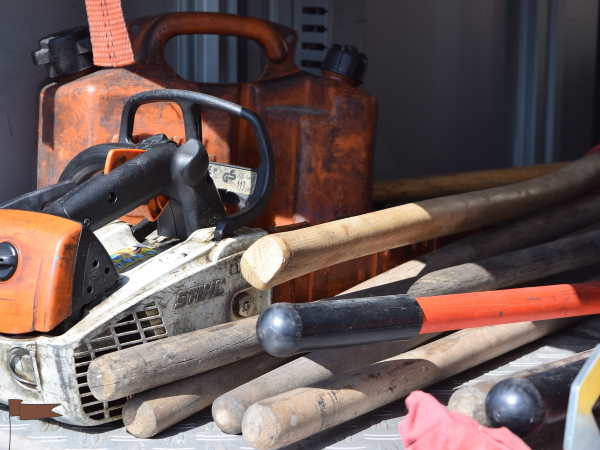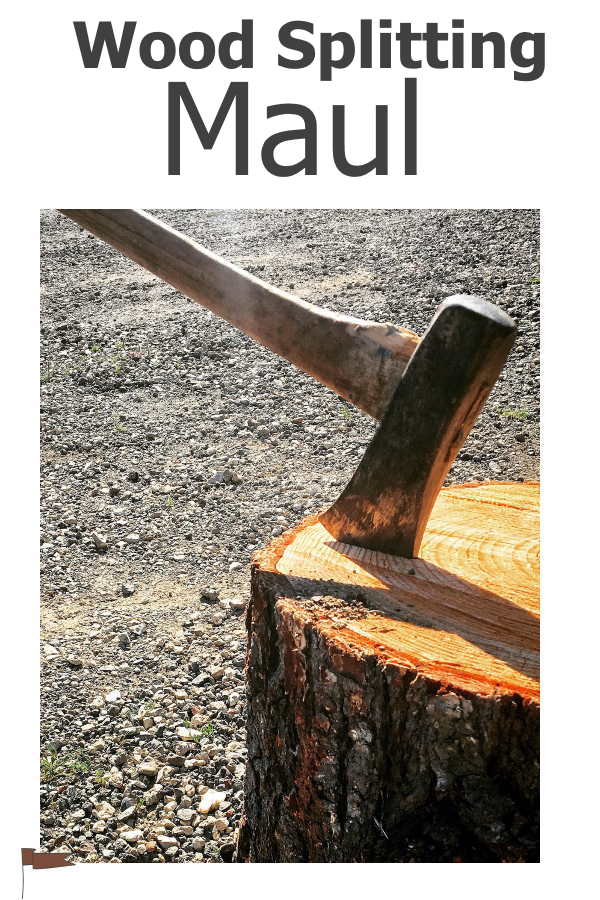- Homesteading
- Fire
- Heating with Wood
- Wood Splitting Maul
Wood Splitting Maul
Alternative Strategy for Splitting Firewood
Splitting mauls are designed to break into a large log of firewood, so they're accordingly, quite heavy.
One of the things people don't tell you is how hard it is to split wood accurately. That axe or maul has a mind of its own when you whack a piece of wood with it.
Using a maul instead of an axe to split wood is completely different. An axe is about half the thickness of a maul, and much lighter.
Some strong guys have a great technique - the maul, being heavy, does the work for them. They lift it into the air, and then let it drop on its own, using its weight to do the work.
There is no 'chopping' action. The handle is held out at arms length, and the weight of the head uses gravity to cut the wood.
Often, you would use the maul to 'break into' larger pieces of wood and then use the axe to do finer work.
When we've had wood delivered, the supplier will use a maul to split the full sized pieces into halves or quarters - it makes our job much easier.
A full piece of wood can be really heavy - each one will weigh around 50lbs. being 14-16" long (depending on the size of the firebox on your wood stove) and some old 'greybacks' (standing dead trees) can be over two or three feet across at the butt.
Even moving them a short distance, such as up onto the block to chop, or onto the electric splitter can be a work out.
 Selection of tools for preparing firewood that might be found in the back of a wood suppliers truck
Selection of tools for preparing firewood that might be found in the back of a wood suppliers truckReplacing a Splitting Maul Handle
The head of the maul might go into the wood, but invariably, you'll
whack the end of the handle on the edge of the block of firewood. In
time, the thing disintegrates, and you need a new handle.
You can buy a new axe or maul, complete with handle, but it costs much more than just a new handle.
The head of the maul almost never wears out,
because it's a huge chunk of cast metal. They don't need sharpening, the
wedge shape just finds its way through the fibres of the wood, and
doesn't cut it per se.
So, now you have a new handle bought from a
mail order source or the hardware store. It will come with a few extra
bits; a wedge and sometimes a smaller metal piece.
If the
original handle is still in place, you need to get it out - this calls
for burning it out. Let the head of the maul cool before you touch it!
Then insert the new handle end into the hole in the maul head. There is usually a split, going about two to three inches into the top end of the handle.
Get it as far as possible into the maul head.
Then insert the wedge, and carefully tap it with a hammer and a block of wood until it fills the entire split.
You'll most likely then have to cut off the excess on the wedge.
Then, sink the head of the maul and the new handle into a bucket of water. This swells the fibres of the wood, making a tight (safe) fit.
Never use a maul that has a loose handle. The weight of it, along with the centrifugal force, can jar the head off - very dangerous for anyone standing near, or yourself.
Once your bigger blocks are broken up with the maul, it will be time to split them even smaller with an axe before stacking them to dry and season before burning.















